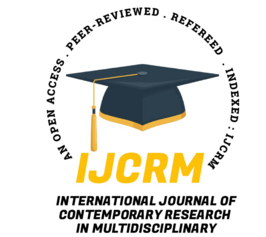International Journal of Contemporary Research In Multidisciplinary, 2025;4(1):45-51
Description of Clinical, Laboratory Profiles and Models of Dengue Fever in Nangarhar University Teaching Hospital During an Outbreak
Author Name: Hadi Saifullah; Nasseemullah Rahmatzai;
Paper Type: research paper
Article Information
Abstract:
Background: Four different strains of the virus cause dengue fever, and these are DEN1, DEN2, DEN3, and DEN4. the man was given by insects (Aedes). comes in two differences: dengue hemorrhagic fever and dengue fever. A person who has acquired one of the serovars will never acquire that serotype again, but he or she loses immunity to the other three serotypes and is then more prone to contracting dengue hemorrhagic fever. At Nangarhar University Teaching Hospital, we studied the Clinical and laboratory Profiles and models of Dengue Fever.
Materials and Methods: This study used retrospective hospital-based research. Clinical and analytical data from 141 patients who sought treatment at a Nangarhar University teaching hospital between July 2022 and February 2023 after being diagnosed with dengue infection were analyzed. Because our research was retrospective, we collected the files of dengue fever patients and studied the clinical, and laboratory examinations and the model of dengue fever. All laboratory examinations of dengue fever patients were performed free of charge at Nangarhar University Hospital. In Nangarhar University Hospital, the RDT (rapid dengue test strip) test is used to diagnose dengue fever. This test is also called dengue combo, which is determined by this NS1, IGM, and IgG test. CBC laboratory examinations were also studied in the files of the patients, and the WBC and thrombocyte counts of the patients were also studied. The variables that we studied are Dengue fever clinical features, laboratory tests (NS1, IGM and IgG, WBC and thrombocytes count), age and gender of patients. and dengue fever models. Both men and women were included in this research, but Other infectious diseases were not included in the study. The data is analyzed by Excel and SPSS version 26.
Result: There were 141 cases of dengue fever, with 114 (80.85%) males and 27 (19.85%) females. When they were divided into age groups, 81 (57.44%) of the patients were between the ages of 40 and 21, with 69 (48.93%) males and 12 (8.82%) females. There were 3 (2.20%) 60-year-olds, 2 (1.47%) of whom were men, and 1 (0.73%) of whom were women. About the symptoms, 141 patients (100%) experienced fever, 130 patients (92.19%) had myalgia, 120 patients (85.10%) had headaches, 3 patients (2.12%) had nausea and vomiting, and 2 patients (1.41%) had rash. individuals with dengue fever underwent laboratory investigations; NS1 124(87.94%) and IGM49 (34.79%) individuals tested positive. Patients with IgG (45.61%) tested positive. The dengue fever model indicated that 141 patients had the infection114 (80%) of the patients were males and 27 (19%) were females. The thrombocyte count in this model was ≥150000–50000, and the WBC count was 18500–2000.There were 27 (19.14%) in the DHF model, with 6 (4.25%) were women and 21 (14.89%) men. In this model, there were between 18500 and 3100 cases of thrombocytopenia and less than 20,000 WBC. One patient, a guy, had the DSS model; his thrombocyte count was 13000 and his WBC count was 6000. Approximately 80% of the dengue fever prevalence was in rural areas of Nangarhar and 20% in the population of Jalalabad city. case fatality rate (CFR) was 1.41%
Conclusion: From this research, it seems that all dengue fever patients have fever, the incidence of dengue fever is high in men, and there are more accidents in the age group of 20–40 years old. In the laboratory diagnosis of the patients, NS1 is mostly positive, and in terms of the dengue fever model, the DHF and DSS models are more fatal. Failure to prevent it will cause the death of patientsږThe prevalence of dengue fever is higher in rural areas than in urban areas.
Keywords:
Arterial Oxygen Saturation, Blood Pressure, Hypoxia, Pulse Rate
How to Cite this Article:
Hadi Saifullah,Nasseemullah Rahmatzai. Description of Clinical, Laboratory Profiles and Models of Dengue Fever in Nangarhar University Teaching Hospital During an Outbreak. International Journal of Contemporary Research in Multidisciplinary. 2025: 4(1):45-51
Download PDF





